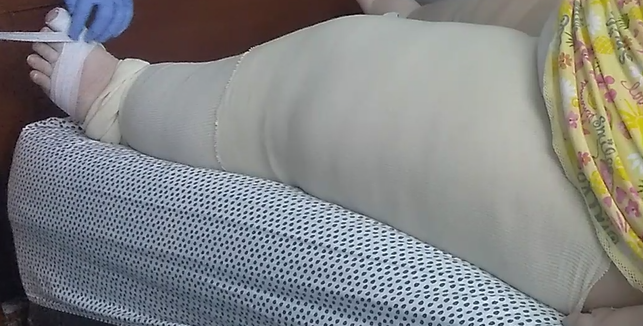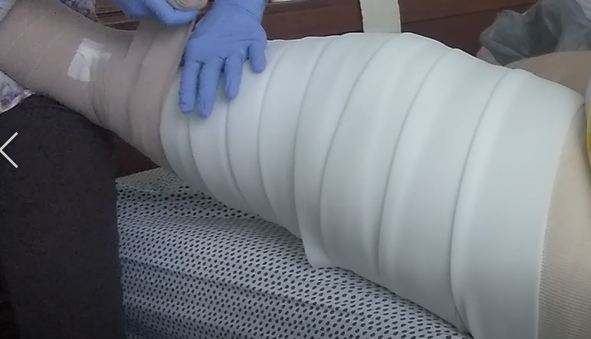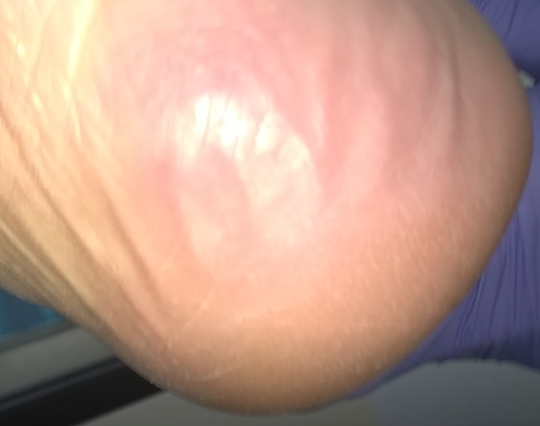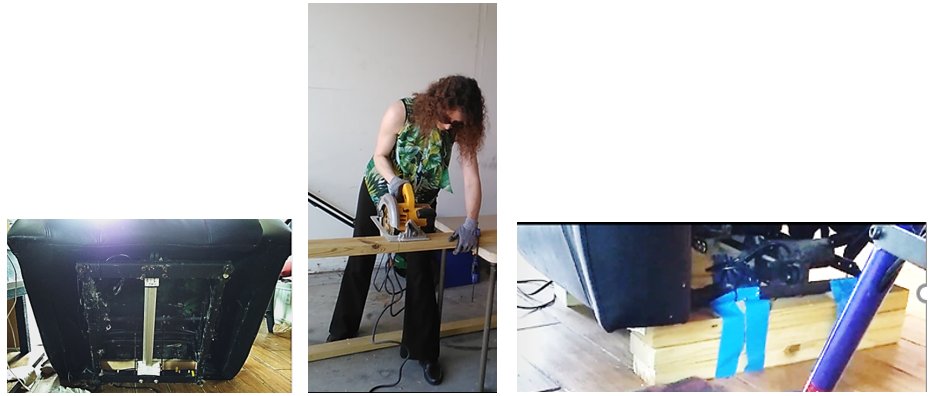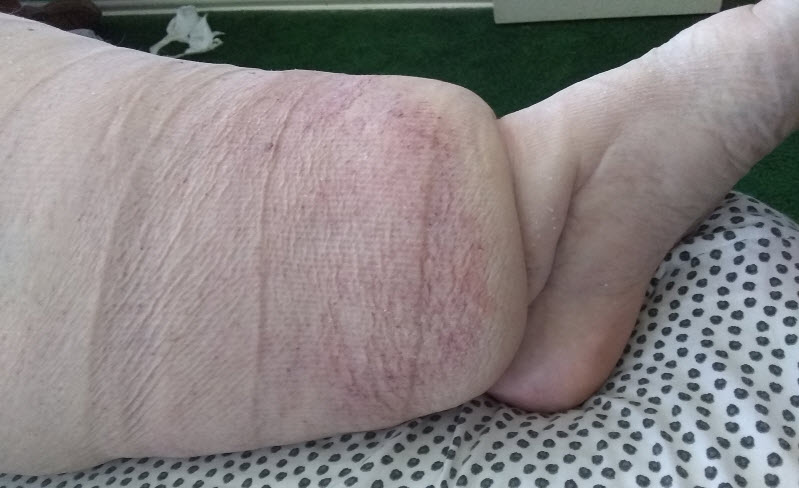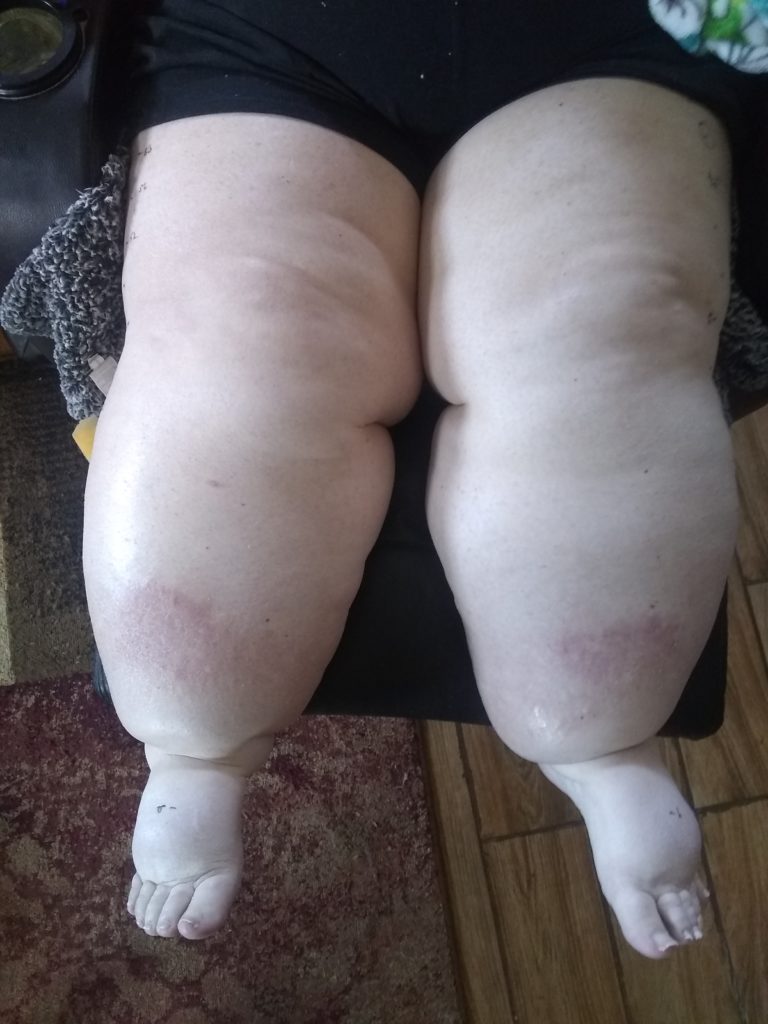Read Part 3 here
Continuing lymphedema treatment
At the conclusion of July’s post, Carol was waiting for her hose. They arrived & she loved them! One problem: The manufacturer didn’t sew the ankle pocket around the full ankle as requested. Turns out, this manufacturer couldn’t sew a pocket all the way around the ankle. Why didn’t they mention that before? Without the pocket, the hose would slip down & bunch, causing pain.
Long story short, I complained, sending copies of communications with the manufacturer’s customs department describing the need for a full pocket and why. Their response was fantastic. They gave us a refund due to the situation. Carol and I tried two more manufacturers and finally got what she needed. We’re still working on adjustments, but she’s very happy with the containment and feel of the compression garments.

The hose were one of several impediments Carol has faced. I mentioned some of them in July. Let’s look at a few more.
Complication – diarrhea
Carol went back to a Keto diet she had used to lose weight in the past (the obesity weight, not the lipedema weight). The diet calls for ingesting a particular oil and liquids the first week which gave her diarrhea. Sometimes that diarrhea ended up on leg bandages. So, she would remove the bandages to shower and her legs would refill. Eventually, she progressed in her diet and recovered from that complication.
Complication – emotional upheaval
Losing someone close to her earlier this year, she has struggled with the void their passing created. In addition, she had a major life change – her job. Covid caused a lot of people to feel isolated as they worked from home. Carol felt isolated, too. After months of structural change (which included moving people she had worked with for years to other departments), she decided to retire. Now she was not only home and alone much of the time, she also wasn’t interacting with the people she enjoyed talking to. Carol is an extrovert, so this was a hard adjustment. She’s currently pursuing virtual counseling options.
Complication – transient ischemic attack (TIA)
As if the prior complications weren’t enough, she spent a weekend in the hospital after experiencing symptoms of a stroke, including spiked blood pressure and difficulty talking (in this case, the speech difficulty was expressive aphasia). She had just been to see her doctor a few weeks before. She was told her cholesterol was elevated and she was given a new medication to help. Then she awoke one Saturday morning unable to talk.
She was taken to the ER by ambulance. After a day of monitoring, they released her with inconclusive results that pointed to a TIA. A TIA is often referred to as a “mini-stroke.” Symptoms are less severe than a stroke and don’t usually last long because the blockage in the brain is temporary. In the days that followed, Carol had occasional difficulty pronouncing words and remembering lyrics to some of her favorite songs, but words were coming back to her. Over the next several days, as we worked on her aphasia and as she practiced on her own, speech improved. But not for long.
More recently, she has been complaining of numbness in her face that comes and goes. I noticed her speech seemed to be getting worse in our last session (even when she slowed down). Her doctor wanted her to hold therapy until she consults a neurologist. That is where we are now. Waiting for her hose revisions and waiting to find out what’s causing her aphasia and numbness.
Conclusion of the lipedema blog series
Carol has had several battles during her lymphedema treatment. But her persistence paid off & she’s made some awesome functional gains as she’s gotten her legs under control. She can get up and down from her chair, in and out of bed, and in and out of her car. She drove a couple times (which she hasn’t done in a year). She has more work to do (much of which is on hold pending her neurology follow up), but she’s still motivated — & she’s happy with her lower leg status. I hope to give you a positive update on her condition in the future.
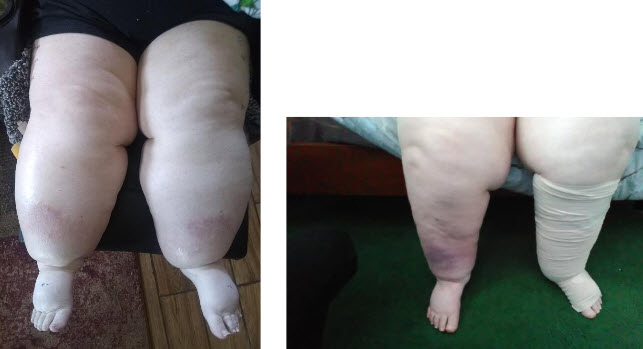
For more information about lipedema, visit the following links: Dr. Karen Herbst, Lipedema Foundation, The Lipedema Project, the Fat Disorders Resource Society, National Center for Advancing Translational Sciences and this article in the Plastics and Reconstructive Surgery Journal.
